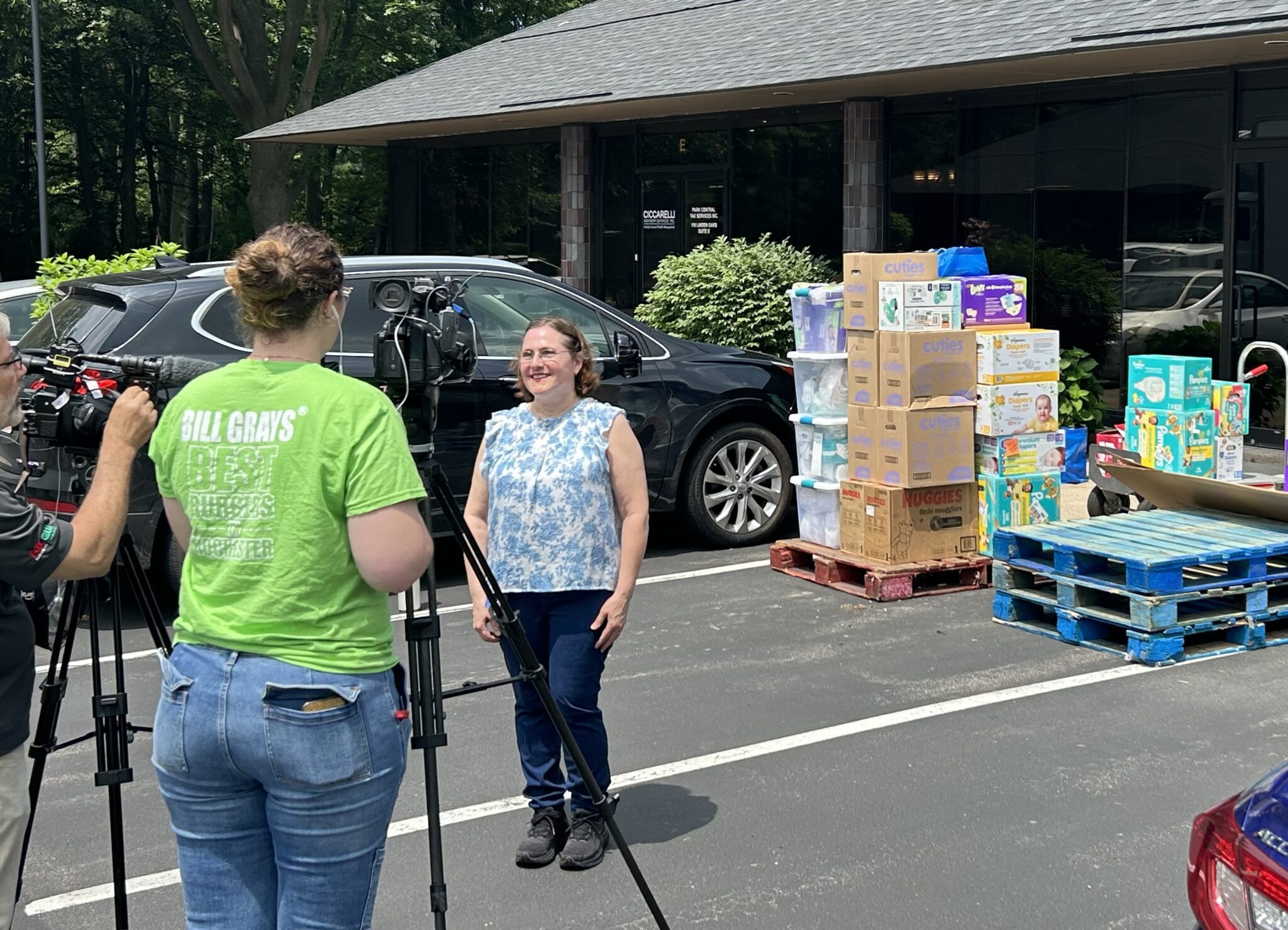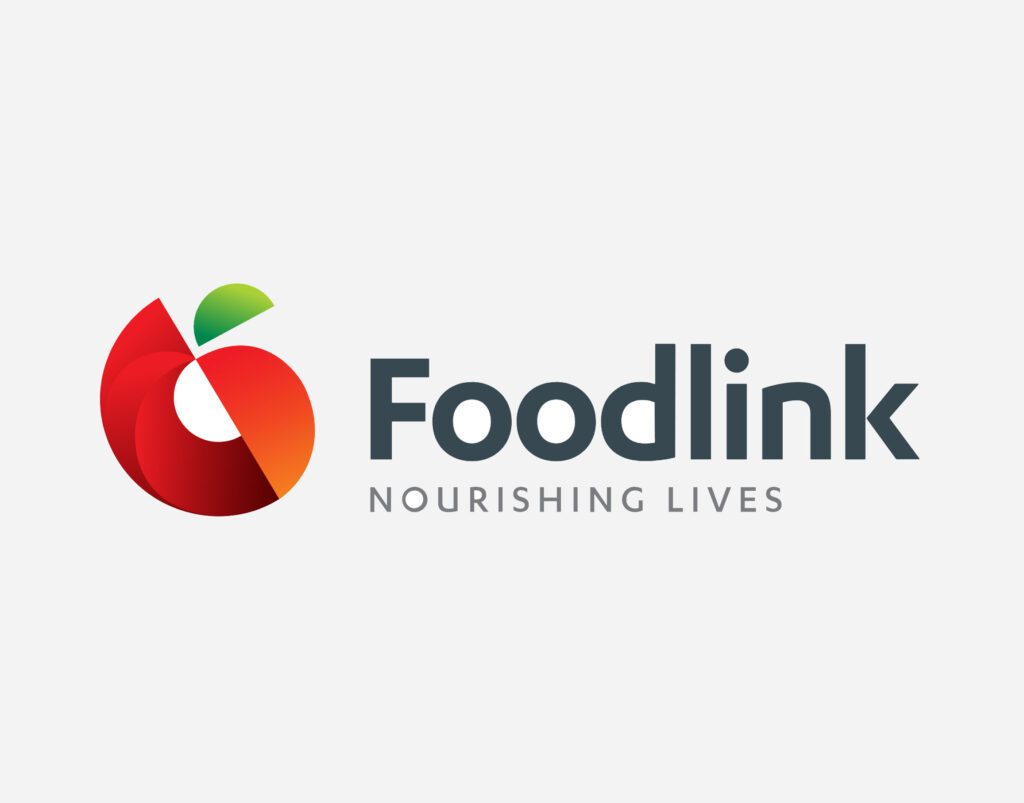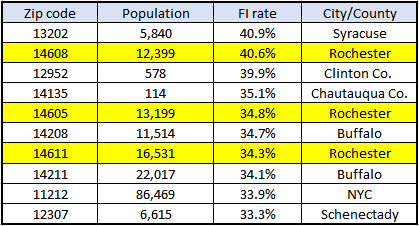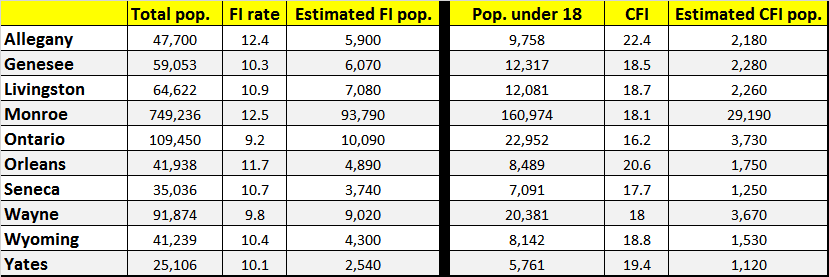Newly released food insecurity statistics illustrate an overwhelming level of need within the City of Rochester, where many residents live in a household that struggles to feed everyone enough nutritious food.
Feeding America’s annual Map the Meal Gap report¹, which studies food insecurity across the country, publishes its findings each spring and distributes it to all member food banks. The data, culled from 2016 — the most recent year available — is presented by county, Congressional district, and by each food bank’s service area. For example, the overall food-insecurity rate for Foodlink’s 10-county region is 11.7 percent (147,420 people), and the child food insecurity rate in that same region is 18.3% (48,960 children).
Foodlink, with support from Common Ground Health, sought sub-county data this year for the first time to better understand the needs of various communities, particularly the City of Rochester. The elevated need in large cities such as Rochester, and smaller cities such as Geneva and Batavia, were often masked behind county-level statistics for Monroe, Ontario and Genesee counties, respectively.
More from Common Ground Health: The food and health connection
Feeding America: The Map the Meal Gap report
In Rochester, three zip codes were among the state’s highest food-insecure communities (see table below). In 14608, 40.6 percent of residents are food-insecure — second highest in the state behind the 13202 zip code in downtown Syracuse. Two other Rochester zip codes cracked the top 10, with 14605 measuring at 34.8% and 14611 measuring at 34.3% — fifth and seventh, respectively.
“Rochester’s food-insecurity rates were by no means surprising,” said Foodlink Executive Director Julia Tedesco. “They are illustrative of the deep connection between poverty and hunger and reveal that there is much work to be done by Foodlink and other mission-based organizations to eradicate both.”
Of all the metro areas in the state, Rochester’s collective food-insecurity rate was highest at 25.9%. Syracuse (24.8) and Buffalo (24%) were not far behind. A few rural communities also showed high food-insecure rates. The zip code 14480 (Lakeville, Livingston County) at the north end of Conesus Lake was 30.7%, albeit with a small sample size of 808 residents. The zip code 14802 (Alfred, Allegany County) was 24.5%.
On the county level, all 10 counties saw improvements in their food-insecurity rates, as the overall rate dropped from 12.4% to 11.7%. Monroe County had the highest food-insecurity rate at 12.5%, which translates to 1 out of every 8 people. The county with the highest child food insecurity rate remained Allegany County at 22.4%. Ontario County possesses the lowest overall and child food-insecurity rates among the 10 counties, at 9.2 and 16.2, respectively.
Researchers derived food-insecurity estimates by examining data for unemployment, poverty, median income and home ownership using the American Community Survey’s 5-year estimates (2012-2016).
Highest food insecurity (FI) zip codes in New York:
County statistics (FI = overall food insecurity; CFI = child food insecurity)
Congressional District statistics:
¹ Gundersen, C., A. Dewey, A. Crumbaugh, M. Kato & E. Engelhard. Map the Meal Gap 2018: A Report on County and Congressional District Food Insecurity and County Food Cost in the United States in 2016. Feeding America, 2018.









